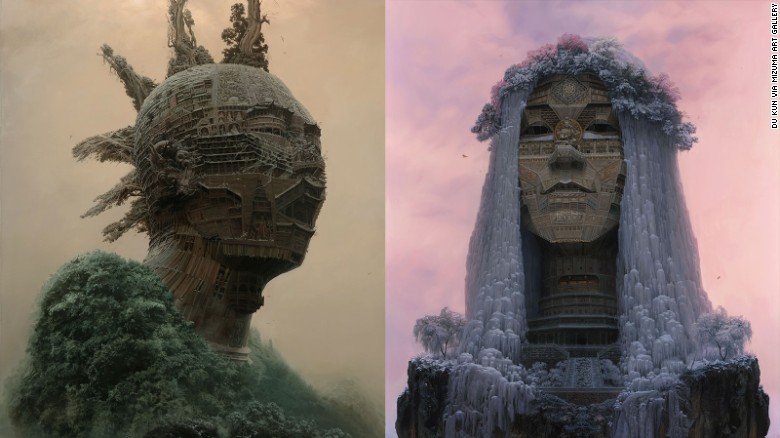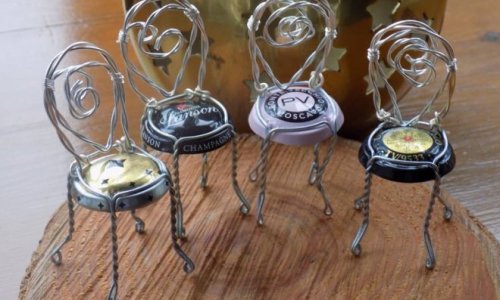Artist Du Kun juxtaposes traditional Chinese values and modern western ideas in his massive oil paintings, which depict Chinese rock stars embedded in traditional mountaintop temples.
Hair is painted as cascading waterfalls, verdant tree canopies and gnarled roots, while noses are Buddhist deities, and necks are elaborately detailed worship halls.
Du's work recalls traditional Chinese landscape paintings that dates back to the Southern Song Dynasty (1127-1279).
The images are also reminiscent of the hallucinatory portraits of Italian renaissance artist Giuseppe Arcimboldo.
Evocatively titled "Revels of the Rock Gods," Du's 2-meter (6.5 ft) high portraits are now being exhibited at the Mizuma Art Gallery in Tokyo this month.
Du says the series is a reflection of his generation's worldview.
"Those of us born in the 1980s were heavily influenced by traditional Buddhist or Confusions values, but also grew up with the great impact of western ideas. We live in a great transformative era in China."
Temples and hipsters
The first time Du sketched a rock star as a mountaintop, he was on a train trip back to his hometown in southwestern China's Sichuan province for the Lunar New Year holiday in 2013.
"I was intrigued by the idea of contrasting the elements from the traditional Chinese architectural temples and today's young hipsters.
"Then I thought, why don't I portray rock stars since I'm such a big fan of rock music? The stars themselves are perfect icons of the rebellious culture, who draw even more drastic contrast to traditional Chinese architecture."
Read: Tribute to 'hipster' grandpa goes viral
Over the past two years, Du has profiled nine Chinese musicians, whom he calls the stars of his generation, interlacing them with Buddhist and Taoist temples from across China.
"I tried to express the idea of freedom, democracy, critical thinking and courage of overthrowing the past through the rock singers."
Many of the rock stars Du chose to profile aren't necessarily household names in China, let alone outside the country.
His favorite is Zuoxiao Zuzhou, whose music Du describes as "extremely quirky and versatile."
He's portrayed with his signature Fedora hat, which is constructed from billowing smoke, while his outfit dissolves into cascading waterfalls.
Du says it's important to him to draw on his Chinese identity in his work.
Read: Chen Man -- Is she China's Annie Leibovitz?
"I had always imitated western modern art. My work wasn't identifiable -- you couldn't tell where the the artist was from."
"But gradually I realized that I needed to create something with Chinese characteristics."
(CNN)












www.ann.az
Follow us !











